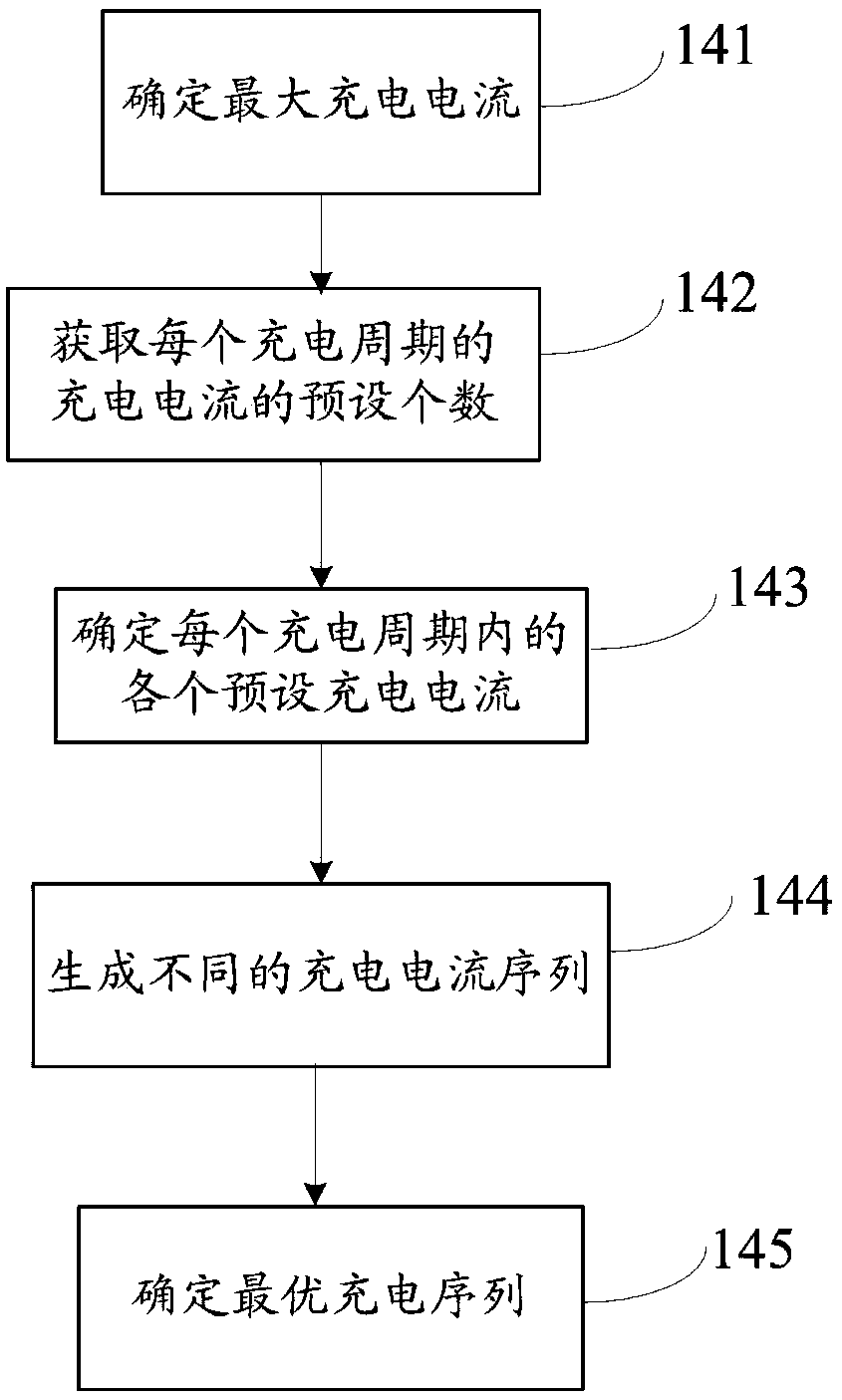Prediction method and prediction system of charging current of lithium battery, and charging device
A charging current and prediction method technology, applied in battery circuit devices, secondary battery charging/discharging, measuring devices, etc., can solve the problems of not considering the impact of battery temperature and battery life, long charging time, slow charging speed, etc.
- Summary
- Abstract
- Description
- Claims
- Application Information
AI Technical Summary
Problems solved by technology
Method used
Image
Examples
Embodiment 1
[0069] like figure 1 Shown, a kind of prediction method of charging current of lithium battery comprises:
[0070] Step 11: Construct the charging objective function with the minimum battery capacity attenuation and the shortest charging time as the goals;
[0071] Step 12: Obtain the measured body temperature of the battery in the kth charging cycle and the measured ambient temperature of the service environment of the battery in the kth charging cycle;
[0072] Step 13: According to the measured body temperature and the measured ambient temperature, predict the predicted body temperature of the battery in each charging cycle between the k+1 charging cycle and the k+p charging cycle, where p represents model prediction The prediction step size of the control method;
[0073] Step 14: According to the charging objective function and each of the predicted main body temperatures, use a model predictive control method to predict the optimal charging current of the k+1th chargin...
Embodiment 2
[0100] Such as image 3 As shown, a prediction system 2 of a lithium battery charging current includes:
[0101] The objective function construction module 21 is used for constructing the charging objective function with the minimum attenuation of battery capacity and the shortest charging time as the goals;
[0102] A temperature acquisition module 22, configured to acquire the measured body temperature of the battery in the kth charging cycle and the measured ambient temperature of the service environment of the battery in the kth charging cycle;
[0103] The temperature prediction module 23 is configured to predict the predicted body temperature of the battery in each charging cycle between the k+1 charging cycle and the k+p charging cycle according to the measured body temperature and the measured ambient temperature, wherein, p represents the prediction step size of the model predictive control method;
[0104] The charging current prediction module 24 is configured to ...
Embodiment 3
[0122] like Figure 5 Shown, a kind of charging device, described charging device is connected with lithium battery, is used for charging described lithium battery 30, and described charging device comprises: first temperature sensor 31, second temperature sensor 32, charging controller 33, The charging machine 34 and the prediction system 2 described in Embodiment 2, wherein,
[0123] The first temperature sensor 31 is used to collect the measured ambient temperature of the service environment of the lithium battery 30;
[0124] The second temperature sensor 32 is connected to the lithium battery 30 for collecting the measured body temperature of the lithium battery 30;
[0125] The prediction system 2 is connected to the first temperature sensor 31 and the second temperature sensor 32 respectively, and is used to construct a charging objective function with the goal of the minimum battery capacity attenuation and the shortest charging time, and according to the kth charging...
PUM
 Login to View More
Login to View More Abstract
Description
Claims
Application Information
 Login to View More
Login to View More - R&D
- Intellectual Property
- Life Sciences
- Materials
- Tech Scout
- Unparalleled Data Quality
- Higher Quality Content
- 60% Fewer Hallucinations
Browse by: Latest US Patents, China's latest patents, Technical Efficacy Thesaurus, Application Domain, Technology Topic, Popular Technical Reports.
© 2025 PatSnap. All rights reserved.Legal|Privacy policy|Modern Slavery Act Transparency Statement|Sitemap|About US| Contact US: help@patsnap.com



